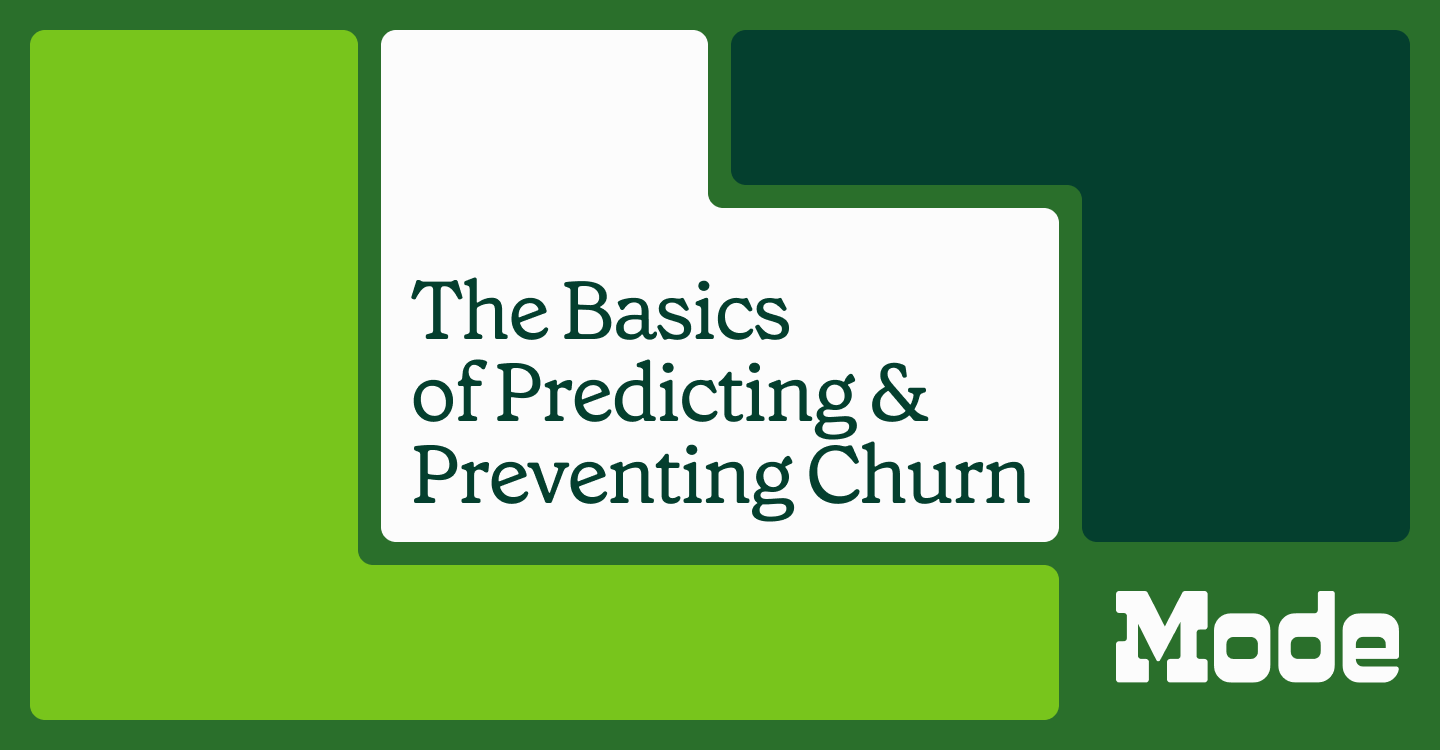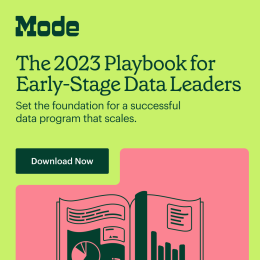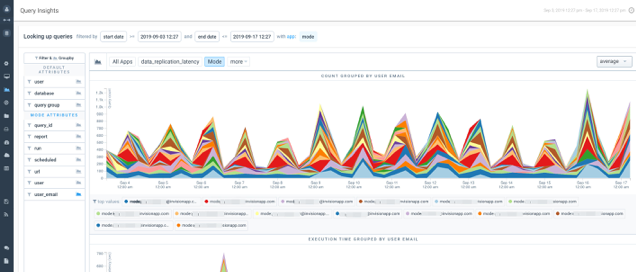Predicting & Preventing Churn: Building a Churn Prediction Model

Chioma Dunkley, Mode Team Writer
August 22, 2022
NaN minute read

Churn is expensive. It almost always costs more to acquire a new customer, than it does to retain a current one, which is why there’s a lot of motivation to predict it before it happens.
We’ve worked on a few successful churn prediction models at Mode, so we have some learnings to share. In this piece, we’ll break down churn prediction, why it’s important, its challenges, and how companies can begin developing a model to prevent churn. We’ll save a deeper dive on churn model analysis as a follow-up.
We'll cover:
Why is predicting churn important?
What do you need when predicting customer churn?
During market turbulence, make sure you're not writing off at-risk accounts too quickly
Prepare for churn ahead of time
How can a BI tool help you in predicting churn and preventing churn?
Great churn prediction models can set your business up for success

The 2023 Playbook for Early-Stage Data Leaders
Create a data program that scales.
What is churn prediction?
Churn prediction is predicting which customers are at high risk of leaving your company or canceling a subscription to a service, based on their behavior with your product.
To predict churn effectively, you’ll want to synthesize and utilize key indicators defined by your team to signal when a customer has a probability of churning so that your company can take action. The goal of churn prediction is to be able to answer questions like “Will [X] customer leave us in X months?” or “Will [X] customer renew their subscription?” and also to understand greater trends in churn.
Why is predicting churn important?
According to a study done by McKinsey, technology and saas companies with the highest performance and revenue growth were also companies with high retention rates and low net revenue churn.
The ability to predict churn before it happens allows businesses to take proactive actions to keep existing customers from churning. This could look like:
Customer success teams reaching out to those high-risk customers to provide support or to gauge what needs may not be being met
Providing more targeted re-engagement campaigns, like reminder emails
Creating more focused customer education content
Re-evaluating larger, company-wide retention initiatives like pricing
When predicting churn, you're not just identifying at-risk customers, you’re also identifying pain points leading up to churn and helping to increase overall customer retention and satisfaction. Predicting churn helps in preventing churn. Preventing churn, in turn, serves as a great revenue source for businesses.
It almost always costs more to acquire a new customer, than it does to retain a current one.
What do you need when predicting customer churn?
You need a model.
At a high level, predicting customer churn requires a detailed grasp of your clientele. Both qualitative and quantitative customer data are usually needed to start building an effective churn prediction model. To ensure that predictions aren’t being made by arbitrary human guesses, these models are often built by a data scientist using machine learning.
To create your churn model, you need to start with the right dataset. Your dataset should include:
A target variable, which is the feature you would like to predict.
In a churn prediction model case, the target variable would be the indicator signifying whether a customer is likely to churn–(yes/no) or (1/0). To obtain this variable, you would need to use historical data of existing customers and previous customers that denotes whether this customer left or stayed; this could be a subscription cancellation, a closed contract, etc. A given time or interval needs to be established to determine when a target has been reached—we don’t want to mark a customer as a churner too soon or too late.
Features, which are data points that describe your customers.
This data is often captured from various data sources like SaaS subscription management software, customer relationship management systems (CRMs), web analytic tools, customer feedback surveys, and more. The specific features that you use may vary based on your company but broadly they can include data like:
Feature usage: this would be a metric like seat adoption, or customer behavior metrics within your product over a period of time. Here at Mode, some of our feature metrics include reports built and reports viewed.
Customer success metrics: this would include metrics like Customer Satisfaction Survey (CSAT) or Net Promoter Score (NPS).
Metadata: If you’re a B2B company this can include demographic data like company size, industry type, etc); If you’re a B2C company, this can include demographic data like age, gender identity, and profession.
Engagement metrics: This would measure actions of customer engagement, like a customer allowing you to use their logo, customers agreeing to speak at events, etc.
With a defined variable and relevant features, you can begin training your model, testing your model, and solidifying your model.
Challenges in customer churn prediction
There are various challenges posed when predicting churn—both when developing a model and in using that model. We spoke with Asha Hill, Mode’s Director of Customer Success Operations and Enablement who has worked closely on our churn prediction models and one of our Senior Data Scientists, and asked them what some of the challenges were in churn prediction. This is what they had to say about challenges when building a churn prediction model.
Building a successful churn model requires:
Ensuring that you have enough data: lack of data can lead to an insufficient model, causing your model to make inaccurate predictions. Lack of data can sometimes be a difficulty with startup businesses.
Ensuring that you don’t have too many data features: too much data can create a lot of “noise” in your model, causing it to make false predictions especially when hit with unseen data.
Ensuring that you have the correct inputs and that you don’t have too many nulls within your dataset: having incorrect inputs and too many null values can render your model useless.
You want accuracy and precision when creating a model, so that you won't get a lot of false negatives or predictions that a customer at risk of churn will stay.
During market turbulence, make sure you’re not writing off at-risk accounts too quickly
We also talked to an Enterprise Account Manager at Mode, who shared some thoughts on how he relied on churn prediction as an end-user to save his accounts. The main takeaway? Be careful not to write off an at-risk account too quickly.
When Covid hit, many industries experienced extreme and rapid changes in their customer usage. These dramatic changes in behavior usage could have led to labeling customers as a churner prematurely. But changes in customer usage don't necessarily always mean they will churn. Instead, that behavior change could signal a great opportunity to proactively engage and act as a partner to their customers in a hard time. Our team was able to save a number of accounts, acting as partners, and walking them through how Mode could help them navigate through the pandemic and economic turbulence. We were able to save accounts effectively because our updated churn model after the pandemic took into account new economic conditions. See how we made changes to our customer health score model to help think about churn in the early days of the pandemic.
Prepare for churn ahead of time
Accurate churn prediction is only as valuable as the effective measures taken to prevent high-risk customers from leaving. So, what do effective measures look like? It is different for every business, and the actions taken will vary based on teams within the organization. It can look like re-engaging a customer through retention emails, reps providing a more personalized experience, re-educating customers on product features, etc.
In the midst of turbulent economic times, it's important to review with your team what actions to take when it comes to churn. Our award-winning customer success organization addressed the following:
How do you mobilize your team to address these at-risk customers?
What are the correct actions to take?
Some actions may not work for every customer. This is where having a nurtured relationship with customers to know their specific pain point can help.
How can a BI tool help you in predicting churn and preventing churn?
A BI tool like Mode gives both data consumers (like customer success managers), and data practitioners (like data scientists), the power to combat churn together.
Data teams can perform sophisticated data analysis with extremely flexible data prep (to allow for easier iteration during analysis) with our Notebook functionality. From there, analysts can create rich visualizations that help business teams easily understand what’s happening with churn and retention. See how Greenhouse Software used Mode to create predictive models.
Great churn prediction models can set your business up for success
Knowing the status of your existing customers is pivotal to your success. With an accurate churn prediction model, your teams can take proactive actions to prevent churn and sustain growth efforts.
Get our weekly data newsletter
Work-related distractions for data enthusiasts.




